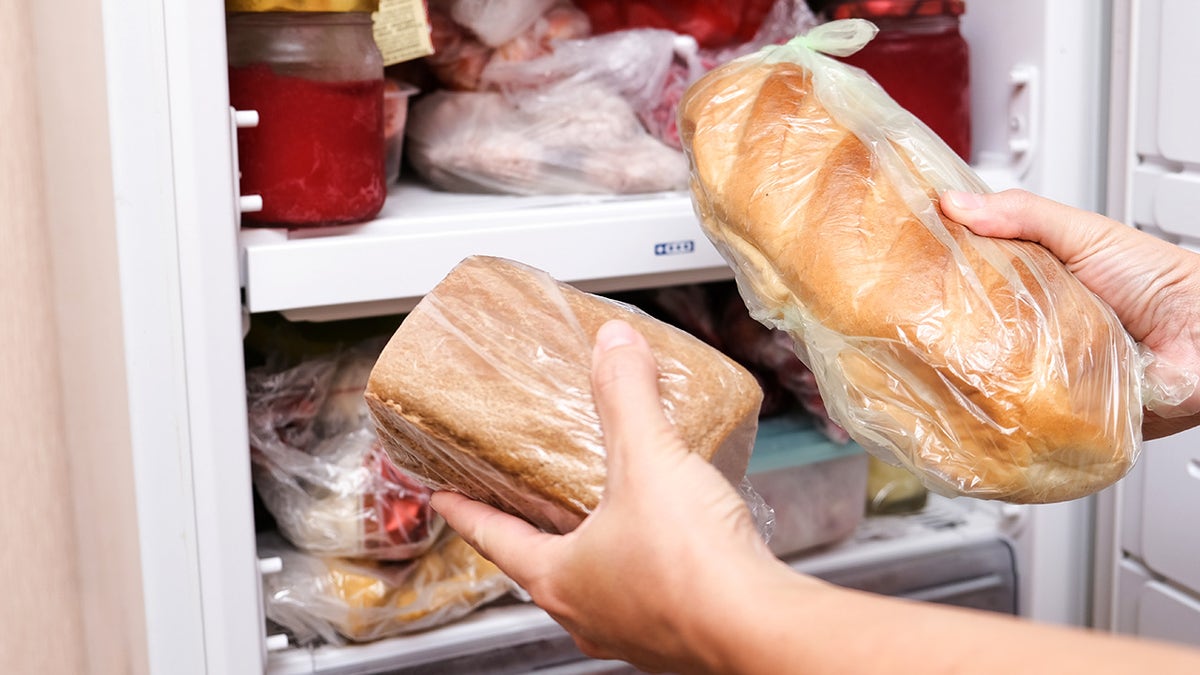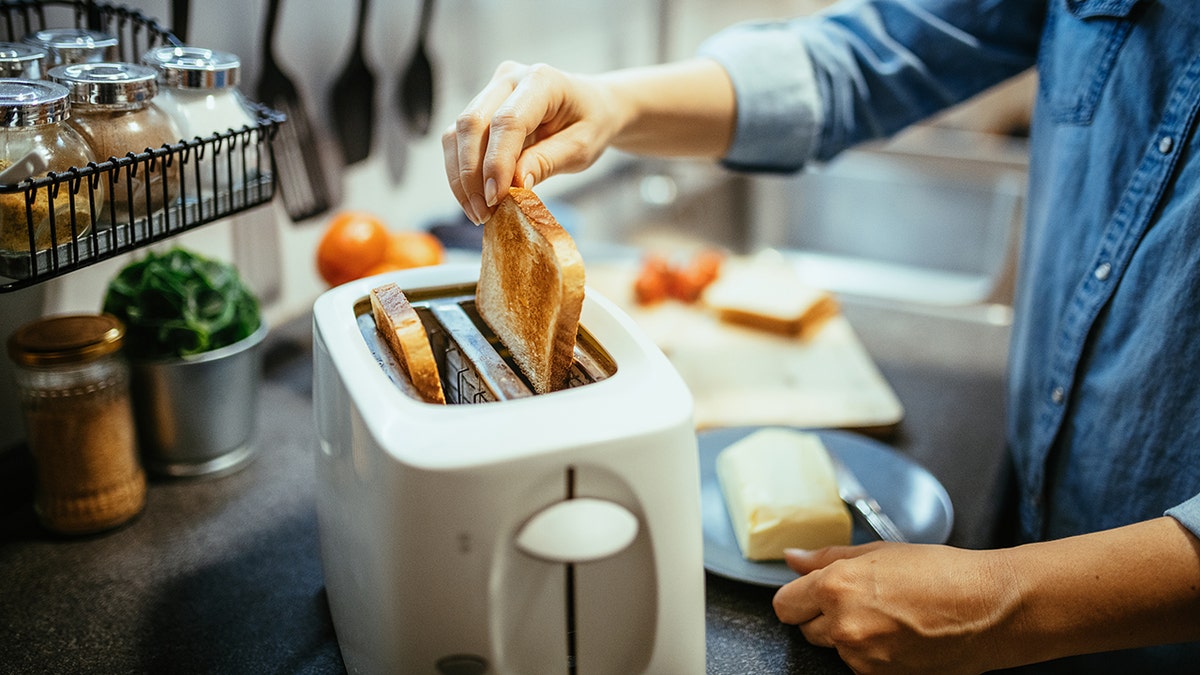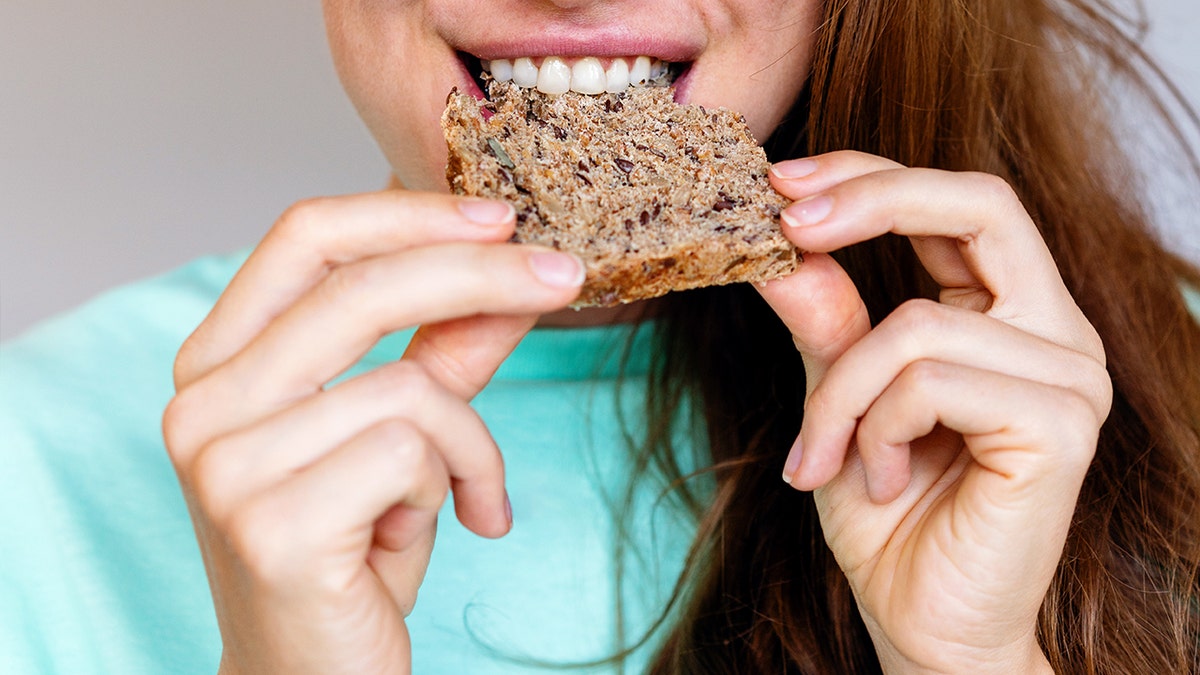NEWYou can now listen to Fox News articles!
A simple kitchen hack is making waves on social media, suggesting that freezing your carbs before eating them could make digestion easier and better for your blood sugar.
Videos circulating on TikTok and Instagram feature doctors saying that once frozen, a slice of bread becomes “completely different and 10 times healthier than it was before you froze it.”
While that may be an exaggeration, nutrition experts say there’s some truth behind the trend and that, while it doesn’t necessarily make bread healthy, it could act as “damage control,” which some research backs up.
5 PROTEIN-PACKED CARBS THAT CAN HELP YOU LOSE WEIGHT AND BUILD MUSCLE, DIETITIAN SAYS
A small 2008 study published in the European Journal of Clinical Nutrition tested bread in four different ways: fresh, frozen, toasted and frozen-then-toasted. Scientists found that the latter combo reduced blood sugar spikes in healthy participants. Compared to eating fresh bread, glucose response dropped by as much as 40%.
Experts claim the secret lies in how freezing and reheating change the structure of bread’s starches, turning some of them into what’s known as resistant starch through a process called retrogradation, which allows the starch to function more like dietary fiber.

Freezing bread and then toasting it before eating may alter how the body digests it, experts say. (iStock)
Instead of being fully digested in the small intestine, resistant starch passes into the colon, where it’s fermented by gut bacteria and can help support digestion, experts told Fox News Digital.
“Resistant starch is a type of carbohydrate that resists digestion in the small intestine and instead feeds gut bacteria in the colon,” said Bryan Quoc Le, Ph.D., a food scientist with Mendocino Food Consulting in California.
The same principle applies to other carbs such as pasta, rice and potatoes.
In the colon, resistant starch ferments and produces short-chain fatty acids, which may support digestion and reduce inflammation. Some people, however, may experience mild bloating when first increasing resistant starch intake, according to dietitians.
FRENCH FRIES TIED TO DIABETES RISK, BUT NOT ALL POTATOES ‘CREATED EQUAL,’ STUDY FINDS
The same principle applies to other carbs such as pasta, rice and potatoes when they’re cooked, cooled and reheated, National Geographic recently reported.
Experts advise people not to freeze freshly baked bread or any other hot food directly because of the risk of bacteria growing and the freezer temperature rising, and instead to divide them and store them in airtight containers.
The benefits, however, are modest.

Toasting alone has also been shown to slightly lower the glycemic index of bread. (iStock)
“Repeated heating and cooling cycles, and chilling for longer periods of time, can significantly increase resistant starch content,” said Helen Tieu, a registered dietitian nutritionist and founder of Diet Redefined in Canada. “But bread choice, portion size and what you eat it with matter much more.”
A 2015 study in the Journal of Functional Foods found resistant starch could increase up to eight times higher depending on the carb and storage method — but also found that the overall effect remains small compared to diet quality.
YOU CAN EAT BREAD AND STAY FIT: HERE ARE 9 HIGH-FIBER OPTIONS FROM A HEALTH COACH
Tieu told Fox News Digital that whole grain, sprouted grain or sourdough breads paired with protein and vegetables are far more effective at controlling blood sugar than white bread, no matter how it’s stored.
Topping it with butter or sugary spreads will also dull any potential benefits.
Le agreed, noting that “the bread choice outweighs the storage or cooking,” and emphasized that freezing and toasting should not be seen as a free pass to eat unlimited slices.
Topping it with butter or sugary spreads will also dull any potential benefits.
MORE FROM FOX NEWS LIFESTYLE
Individual factors such as age, sex and the gut microbiome can also determine how much benefit a person gets from resistant starch, Le said.

Nutritionists say bread choice and portion size matter most. (iStock)
While toasting alone has been shown to slightly lower the glycemic index of bread, both experts agreed that portion control and nutrient-dense bread varieties will always deliver bigger results.
CLICK HERE TO SIGN UP FOR OUR LIFESTYLE NEWSLETTER
Importantly, freezing and reheating bread does not strip away fiber, protein or most vitamins, experts said. The main drawback is texture, as frozen bread may go stale faster or lose some freshness.
More research is also needed on the tactic.
CLICK HERE TO GET THE FOX NEWS APP
“Most studies have been short term, often including healthy volunteers, and measure single-meal blood sugar responses,” Tieu said.
“To know if this really helps people with pre-diabetes or diabetes, we’d need longer, larger studies that look at outcomes like improved A1c, insulin sensitivity or reduced medication need.”


